#martin kusej
Text
Bayerische Staatsoper - Rusalka
Foto ©Wilfried Hösl
Dopo le emozionanti recite dello scorso dicembre all’ Oper Frankfurt, non volevo assolutamente perdermi il ritorno di Asmik Grigorian alla Bayerische Staatsoper, dove la quarantaduenne cantante lituana ha presentato la sua caratterizzazione del ruolo principale nella ripresa della Rusalka di Antonin Dvořák,
Continue reading Untitled
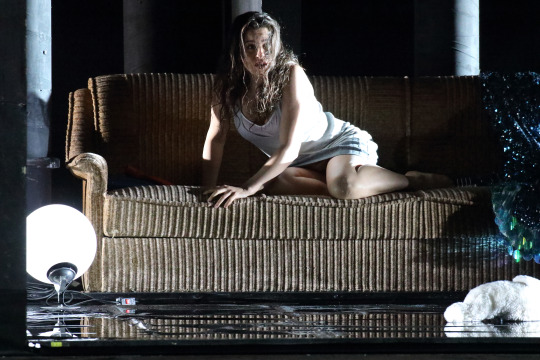
View On WordPress
#asmik grigorian#bayerische staatsoper münchen#bayerische staatsorchester#canto#critica#dmytro popov#dvorak#gunther groissböck#henrik nanasi#martin kusej#novecento#opera#rusalka#teatro
0 notes
Text
Modena, arriva lo spettacolo Accabadora
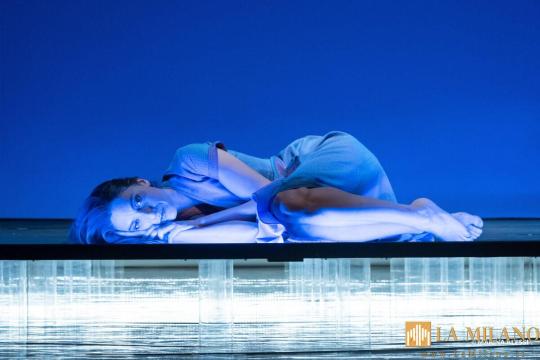
Modena, arriva lo spettacolo Accabadora.
Martedì 15 e mercoledì 16 novembre alle ore 20.30 arriva al Teatro Storchi di Modena Accabadora, una coproduzione Savà srl, TPE – Teatro Piemonte Europa ed Emilia Romagna Teatro ERT / Teatro Nazionale, con in scena Anna Della Rosa diretta da Veronica Cruciani, Premio Hystrio alla regia lo scorso settembre.
Dopo le date modenesi, lo spettacolo è in programma al Teatro Arena del Sole di Bologna martedì 13 e mercoledì 14 dicembre.
Accabadora è uno dei romanzi più letti di Michela Murgia, Premio Campiello 2010, ambientato in un paesino immaginario della Sardegna. Protagonista è Maria che all’età di sei anni viene affidata a Bonaria Urrai come fill’e anima, una forma di adozione concordata tra il genitore naturale e quello adottivo.
La donna vive sola, fa la sarta e all’occorrenza è anche "accabadora". La parola, di tradizione sarda, prende la radice dallo spagnolo "acabar" che significa uccidere, finire: Bonaria aiuta quindi le persone in fin di vita ad andarsene.
La bambina cresce nell’ammirazione della nuova madre, più colta e attenta della precedente, fino al momento in cui scopre questa attività e fugge nel continente per cambiare vita e dimenticare il passato. Qualche anno dopo Maria è costretta a tornare sul letto di morte di Tzia Bonaria: l’accudimento finale è infatti uno dei compiti che spetta ai "figli d’anima".
Un monologo per voce femminile che la regista Veronica Cruciani affida al talento e all’intensità di Anna Della Rosa e alla drammaturga Carlotta Corradi per la traduzione scenica del romanzo, che parte proprio dal ritorno di Maria sull’isola e conduce il pubblico dritto nel mezzo del silenzio fra le due donne, con il peso di un lungo tempo di separazione.
Veronica Cruciani è regista e attrice, diplomata alla Civica Scuola d’Arte Drammatica Paolo Grassi. Nel 2004 fonda la Compagnia Veronica Cruciani, con cui conduce un’indagine sul rapporto fra memoria e drammaturgia contemporanea. Nel 2008 firma la regia de Il ritorno, il cui testo, di Sergio Pierattini, vince il Premio della Critica. Nel 2011 riceve il Premio Hystrio-ANCTb dell’Associazione Nazionale dei Critici italiani. Dal 2013 al 2015 è direttrice artistica del Teatro Biblioteca Quarticciolo di Roma. Nel 2015 è prodotta dal Teatro di Roma per Preamleto di Michele
Santeramo e dal Teatro Carcano di Milano per Due donne che ballano di Josep Maria Benet con Maria Paiato e Arianna Scommegna. È tra i docenti della Scuola Officine Pasolini della Regione Lazio, Accademia Stap Brancaccio e Accademia Padiglione Ludwig. Nel cinema lavora come attrice e acting coach. A settembre 2022 riceve il Premio Hystrio alla regia.
Anna Della Rosa, diplomata alla Civica Scuola Paolo Grassi, si specializza con Luca Ronconi e
Massimo Castri e debutta con Peter Stein al Teatro Greco di Siracusa. È vincitrice di riconoscimenti fra cui il Premio ETI Gli Olimpici del Teatro e il Premio Virginia Reiter per il ruolo di Giacinta nella Trilogia della villeggiatura diretta da Toni Servillo; il Premio Marisa Bellisario e il Premio Duse come migliore giovane attrice in Blackbird, regia di Lluìs Pasqual. Interprete protagonista in molti spettacoli, ha collaborato con grandi registi italiani e internazionali come Marco Bellocchio (Zio Vanja), Pascal Rambert (Clôture de l’amour, Prova e Sorelle), Valter Malostib(Molière / Il Misantropo e Cleopatràs), Andrée Ruth Shammah (Il malato immaginario), Rosario Lisma (Peperoni difficili e Bad and Breakfast), Marco Baliani (I sette contro Tebe), Martin Kusej (Disgraced). Di recente, è interprete della coproduzione ERT Accabadora e del monologo L’Angelo
di Kobane di Henry Naylor. È co-fondatrice della Compagnia Jacovacci e Busacca ed è stata la
Ragazza Esangue nel film premio Oscar La grande bellezza di Paolo Sorrentino.
Informazioni e prenotazioni Teatro Storchi:
Prezzi dei biglietti € 25 / 10
Biglietteria Teatro Storchi – Largo Garibaldi 15, Modena
Orari apertura al pubblico: martedì e sabato dalle 10.00 alle 14.00 e dalle 16.30 alle 19.00;
mercoledì e giovedì dalle 10.00 alle 14.00
[email protected] | modena.emiliaromagnateatro.com | www.vivaticket.it
Biglietteria telefonica – tel. 059 2136021
Dal martedì al venerdì dalle 10.00 alle 14.00...
#notizie #news #breakingnews #cronaca #politica #eventi #sport #moda
Read the full article
0 notes
Text





PARA OS DEVOTOS DE MOZART A MARCA DA SEMANA FOI O DIA 28 DE OUTUBRO DATA DA ESTREIA DE “DON GIOVANNI” EM PRAGA: foi em 28 de Outubro de 1787 que, com libretto de Da Ponte, Mozart deu por terminado “Don Giovanni” o “ il dissoluto punito” opera bufa em 2 actos que subiu à cena logo no dia seguinte! A obra é colossal .Richard Strauss que a dirigiu mais de cem vezes disse que trocaria toda a sua música pela abertura do D. Giovanni .A minha devoção a Amadeus é antiga profunda e indelével e confesso que muito poucos serão os registos em CD desta opera que não possua . Partilho aqui as minhas primeiras escolhas certamente pouco originais pois os mozartianos convergem no superlativo ...Nas gravações históricas destaco Glyndebourne / Busch Naxos 8 110135/7; feita antes da II Guerra Mundial impressiona pelo Leporello de Salvatore Baccaloni mas sobretudo pela regência de Fritz Busch. Nas modernas aponto a Orquestra de Câmara Mahler / Nézet-Séguin DG 477 9878GH3 .Mais uma vez, realce para a direcção musical de Yannick Nézet-Séguin um mozartiano nato. Excelente elenco com Ildebrando D’Arcangelo e Luca Pisaroni, e Joyce DiDonato.Mas o meu registo favorito continua a ser o da EMI / Warner 966799- 2Orquestra Filarmónica /Giulini .60 anos depois, Carlo Maria Giulini e o seu elenco estelar continuam sem rival . Quanto a registos em DVD a primeira escolha é a produção filmada por Paul Czinner no Salzburg Felsenreitschule dirigida por Wilhelm Furtwängler, alguns meses antes de sua morte em novembro de 1954. Oportunidade para ver o grande maestro conduzindo a Filarmónica de Viena ! “o elenco inclui um jovem Walter Berry como perigoso Masetto e Cesare Siepi no seu auge, interpretando Don Giovanni como um Errol Flynn”. (E como diz João Oliveira Cachado uma encenação “que é um sossego”.) . Quanto a experiências pessoais ao vivo destaco três : a estreia do D. Giovanni “da lingerie” de Martin Kusej´s no Festival de Salzburgo 2004 onde Anna Netrebko foi Donna Anna e Nikolaus Harnoncourt estava no pódio.Thomas Hampson foi o Don e Magdalena Kozena Zerlina . Tivemos a sorte de assistir . Depois em Nova Iorque em 2006 foi a estreia no MET de Peter Mattei no papel do Don . Finalmente o D. Giovanni a que assistimos em Maio de 2008 em Berlim na Staatsoper Unter den Linden . Foi uma das melhores performances musicais desta opera a que assisti .Don Giovanni foi a primeira ópera que Daniel Barenboim dirigiu em 1973. Ele convive com a partitura há mais de trinta anos, voltando a ela em várias ocasiões. Os resultados nesse dia 11 de Maio ocasião foram nada menos do que magníficos no que dizia respeito a ele e a Staatskapelle Berlin. Não teve esse nível a direcção de Peter Mussbach com uma parede rotativa irritante e D. Elvira chegando de Vespa . No elenco destaque para o Don de Rene Pape e a D. Elvira de Annete Dasch .
1 note
·
View note
Photo
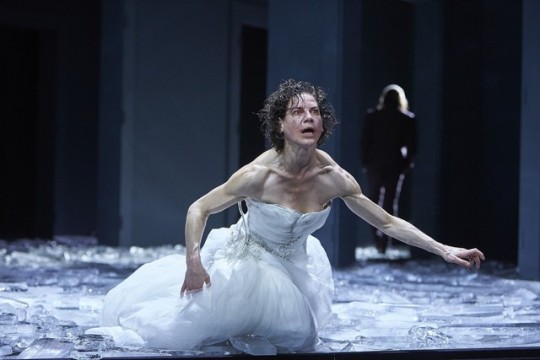


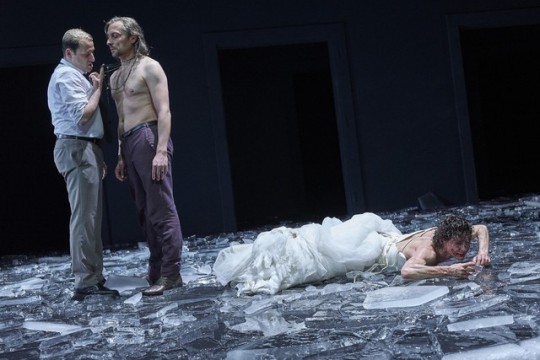

Phädras Night, Residenztheater
Created by: Albert Ostermaier and Martin Kusej
#munich theater#German#german theatre#acting#costume design#lighting design#scenic design#directing#new work#Theater
148 notes
·
View notes
Text
Vienna’s Ambitious Burgtheater Tours the Ruins of Europe
VIENNA — Martin Kusej, the new artistic director of the Burgtheater, Austria’s main playhouse, wants the Burg to be a place of extremes. “Extremely controversial, extremely varied, extremely urgent, extremely contemporary, extremely loud, extremely quiet, extremely Austrian, extremely international,” promises a manifesto-like text on the theater’s website.
To that list, one might add “extremely ambitious.”
Kusej’s first season in Vienna features 30 premieres (including five directed by him), which range from classical dramas to brand-new works. In mid-January, a new production of Heiner Müller’s “Die Hamletmaschine” (“The Hamlet Machine”) was the opening salvo of “Europamaschine,” an interdisciplinary series inside the stately Kasino, a former archduke’s residence that is now one of the Burg’s smaller venues. Co-curated by Oliver Frljic, who also directed “Die Hamletmaschine,” and the Croatian philosopher Srecko Horvat, the series features readings, lectures, debates and even dinners that address the question of where Europe is headed.
On the basis of “Hamletmaschine” and two other Burgtheater premieres this season, the answer to that question is extremely gloomy.
Müller’s 1977 play is a poetic and nonlinear reflection on “Hamlet” and European culture, with a strong feminist subtext. It includes no dialogue from William Shakespeare’s play, although Müller invents a number of Shakespearean-sounding quotes and scatters them throughout the dense text, along with references to some of the Bard’s other plays and German literature, philosophy and history.
The nine-page text can be staged numerous ways and is considered a foundational text of German post-dramatic theater, a mostly non-narrative approach to the stage that reflects on the theatrical experience and the possibilities of theater. In 1990, Müller, a leading East German playwright and intellectual, staged “Die Hamletmaschine” as the play within the play in a Berlin production of “Hamlet” that ran seven and a half hours.
Frljic’s production is a comparatively brisk 75 minutes and stars five actors from the Burg’s ensemble. Like the Croatian director’s recent production of “Anna Karenina” at the Maxim Gorki Theater in Berlin, this “Hamletmaschine” has an engaging intensity that owes much to the actors’s quick-witted performances, but it goes off the rails toward the end. With little in the way of props beyond a red armchair and a coffin, the actors energetically perform a revised version of the text that includes quotes from Vladimir Putin, Victor Orban and Marine Le Pen, as well as multiple addresses to the audience. But such additions to the dialogue are, on balance, less successful than many of Frljic’s wittier staging ideas, such as a magic trick in which an Austrian flag locked in the coffin transforms into an endless ream of various European flags sewn together.
The production is also less effective when stating its political messages in more explicit ways. At one point, the actors introduce themselves as Gastarbeiter (“guest workers”) from other European nations, including Hungary, Ukraine and Luxembourg, and try to make a sincere point about diversity among Europeans within a parody of white nationalist rhetoric. Looking out into the audience, the all-white cast praise the audience for being “so white and so diverse” and quip that only white people can afford a ticket to the Burg. When the actors start talking about how racist and xenophobic Austrians are, the audience I was part of smiled back, as if comfortable in the knowledge that they were not that kind of Austrian.
If those stage gestures feel somewhat morally superior and banal, they are harmless next to the production’s nauseating grand finale: a breathless run-through of a sizable portion of the text we have already heard, this time performed by Marcel Heuperman, who is naked as he simulates defecation and sex acts on a large silicon pig. Is the pig Austria? Europe? Hamlet? By this point, the only question that had any urgency to this audience member: To flee or not to flee?
Two ambitious main stage productions lead us deeper into Europe’s origins and its ruins. In “Die Edda,” the Icelandic directing and writing duo Thorleifur Örn Arnarsson and Mikael Torfason conjure up a theatrical version of Old Norse legends from the 13th century. Interweaving these ancient myths with modern-day characters, they set out to create a new kind of theatrical epic, at once expansive and surprisingly intimate.
Arnarsson, who is also the new head of drama at Berlin’s Volksbühne, cuts the saga, with its cast of gods, giants and dwarves, down to size in an intricate production that is endearingly scrappy. Despite the vastness of the Burgtheater stage, the elaborate lighting and the apparently unlimited fog budget, the raggedy costumes and the slapdash scaffolding lend the proceedings a DIY feel. Live music is used to help string together episodes of varying levels of interest. We wince as Odin sacrifices his eye for absolute knowledge, laugh as an emotional Thor loses his hammer and listen patiently to a lengthy monologue about Torfason’s father, who imagined himself to be a modern-day Viking. The striking visuals and loud music, however, including an extended riff on Arcade Fire, are ultimately not enough to compel one’s concentration.
For those of a particularly eschatological bent, there’s more Armageddon around the bend in Kay Voges’s latest work, “Dies Irae — Day of Wrath,” subtitled “An Opera for the End of Time.”
After tackling the Bible with his stupefying play “Das 1. Evangelium,” Voges has turned his directorial attention to the apocalypse in another overstuffed theatrical frolic. The end of days, it turns out, is perfectly suited for Voges’s uniquely headache-inducing brand of theater, which combines rigorously choreographed routines and video on an endlessly rotating stage. Voges’s aesthetic is clearly indebted to the German director Frank Castorf, although it lacks the verbal exuberance or bravura acting of Castorf’s best work.
As the elaborate set goes round and round, various scenarios repeat in a loop. Peter Wallfisch’s rock soundtrack helps usher us between the episodes, lending a structure that was lacking in “Das 1. Evangelium.” In one scene, passengers start mysteriously disappearing midflight from an Air Mageddon plane. In another, a couple are filmed making love in a motel room (the sex is real, according to local reports). Other characters include a man dying in his hospital bed and a Beckett-like pair whose absurd exchanges provide some comic relief. Otherwise, the dialogue, cobbled together by Alexander Kerlin, is a patchwork of dreary quotes from the likes of Walter Benjamin, Friedrich Nietzsche and Jacques Derrida. When these are added to the poppy music and the twirling stage, the effect is often numbing and the two-hour running time feels much longer.
It seems this is the way the world ends: not with a bang, but with a yawn.
Die Hamletmaschine. Directed by Oliver Frljic. Vienna Burgtheater. Through Feb. 12. Part of Europamaschine. Through March 12.
Dies Irae — Tag des Zorns. Directed by Kay Voges. Vienna Burgtheater. Through Feb. 16.
Die Edda. Directed by Thorleifur Örn Arnarsson. Vienna Burgtheater. Through Feb. 15.
Sahred From Source link Arts
from WordPress http://bit.ly/2RhQr1c
via IFTTT
0 notes
Text
Vienna’s Ambitious Burgtheater Tours the Ruins of Europe
VIENNA — Martin Kusej, the new artistic director of the Burgtheater, Austria’s main playhouse, wants the Burg to be a place of extremes. “Extremely controversial, extremely varied, extremely urgent, extremely contemporary, extremely loud, extremely quiet, extremely Austrian, extremely international,” promises a manifesto-like text on the theater’s website.
To that list, one might add “extremely ambitious.”
Kusej’s first season in Vienna features 30 premieres (including five directed by him), which range from classical dramas to brand-new works. In mid-January, a new production of Heiner Müller’s “Die Hamletmaschine” (“The Hamlet Machine”) was the opening salvo of “Europamaschine,” an interdisciplinary series inside the stately Kasino, a former archduke’s residence that is now one of the Burg’s smaller venues. Co-curated by Oliver Frljic, who also directed “Die Hamletmaschine,” and the Croatian philosopher Srecko Horvat, the series features readings, lectures, debates and even dinners that address the question of where Europe is headed.
On the basis of “Hamletmaschine” and two other Burgtheater premieres this season, the answer to that question is extremely gloomy.
Müller’s 1977 play is a poetic and nonlinear reflection on “Hamlet” and European culture, with a strong feminist subtext. It includes no dialogue from William Shakespeare’s play, although Müller invents a number of Shakespearean-sounding quotes and scatters them throughout the dense text, along with references to some of the Bard’s other plays and German literature, philosophy and history.
The nine-page text can be staged numerous ways and is considered a foundational text of German post-dramatic theater, a mostly non-narrative approach to the stage that reflects on the theatrical experience and the possibilities of theater. In 1990, Müller, a leading East German playwright and intellectual, staged “Die Hamletmaschine” as the play within the play in a Berlin production of “Hamlet” that ran seven and a half hours.
Frljic’s production is a comparatively brisk 75 minutes and stars five actors from the Burg’s ensemble. Like the Croatian director’s recent production of “Anna Karenina” at the Maxim Gorki Theater in Berlin, this “Hamletmaschine” has an engaging intensity that owes much to the actors’s quick-witted performances, but it goes off the rails toward the end. With little in the way of props beyond a red armchair and a coffin, the actors energetically perform a revised version of the text that includes quotes from Vladimir Putin, Victor Orban and Marine Le Pen, as well as multiple addresses to the audience. But such additions to the dialogue are, on balance, less successful than many of Frljic’s wittier staging ideas, such as a magic trick in which an Austrian flag locked in the coffin transforms into an endless ream of various European flags sewn together.
The production is also less effective when stating its political messages in more explicit ways. At one point, the actors introduce themselves as Gastarbeiter (“guest workers”) from other European nations, including Hungary, Ukraine and Luxembourg, and try to make a sincere point about diversity among Europeans within a parody of white nationalist rhetoric. Looking out into the audience, the all-white cast praise the audience for being “so white and so diverse” and quip that only white people can afford a ticket to the Burg. When the actors start talking about how racist and xenophobic Austrians are, the audience I was part of smiled back, as if comfortable in the knowledge that they were not that kind of Austrian.
If those stage gestures feel somewhat morally superior and banal, they are harmless next to the production’s nauseating grand finale: a breathless run-through of a sizable portion of the text we have already heard, this time performed by Marcel Heuperman, who is naked as he simulates defecation and sex acts on a large silicon pig. Is the pig Austria? Europe? Hamlet? By this point, the only question that had any urgency to this audience member: To flee or not to flee?
Two ambitious main stage productions lead us deeper into Europe’s origins and its ruins. In “Die Edda,” the Icelandic directing and writing duo Thorleifur Örn Arnarsson and Mikael Torfason conjure up a theatrical version of Old Norse legends from the 13th century. Interweaving these ancient myths with modern-day characters, they set out to create a new kind of theatrical epic, at once expansive and surprisingly intimate.
Arnarsson, who is also the new head of drama at Berlin’s Volksbühne, cuts the saga, with its cast of gods, giants and dwarves, down to size in an intricate production that is endearingly scrappy. Despite the vastness of the Burgtheater stage, the elaborate lighting and the apparently unlimited fog budget, the raggedy costumes and the slapdash scaffolding lend the proceedings a DIY feel. Live music is used to help string together episodes of varying levels of interest. We wince as Odin sacrifices his eye for absolute knowledge, laugh as an emotional Thor loses his hammer and listen patiently to a lengthy monologue about Torfason’s father, who imagined himself to be a modern-day Viking. The striking visuals and loud music, however, including an extended riff on Arcade Fire, are ultimately not enough to compel one’s concentration.
For those of a particularly eschatological bent, there’s more Armageddon around the bend in Kay Voges’s latest work, “Dies Irae — Day of Wrath,” subtitled “An Opera for the End of Time.”
After tackling the Bible with his stupefying play “Das 1. Evangelium,” Voges has turned his directorial attention to the apocalypse in another overstuffed theatrical frolic. The end of days, it turns out, is perfectly suited for Voges’s uniquely headache-inducing brand of theater, which combines rigorously choreographed routines and video on an endlessly rotating stage. Voges’s aesthetic is clearly indebted to the German director Frank Castorf, although it lacks the verbal exuberance or bravura acting of Castorf’s best work.
As the elaborate set goes round and round, various scenarios repeat in a loop. Peter Wallfisch’s rock soundtrack helps usher us between the episodes, lending a structure that was lacking in “Das 1. Evangelium.” In one scene, passengers start mysteriously disappearing midflight from an Air Mageddon plane. In another, a couple are filmed making love in a motel room (the sex is real, according to local reports). Other characters include a man dying in his hospital bed and a Beckett-like pair whose absurd exchanges provide some comic relief. Otherwise, the dialogue, cobbled together by Alexander Kerlin, is a patchwork of dreary quotes from the likes of Walter Benjamin, Friedrich Nietzsche and Jacques Derrida. When these are added to the poppy music and the twirling stage, the effect is often numbing and the two-hour running time feels much longer.
It seems this is the way the world ends: not with a bang, but with a yawn.
Die Hamletmaschine. Directed by Oliver Frljic. Vienna Burgtheater. Through Feb. 12. Part of Europamaschine. Through March 12.
Dies Irae — Tag des Zorns. Directed by Kay Voges. Vienna Burgtheater. Through Feb. 16.
Die Edda. Directed by Thorleifur Örn Arnarsson. Vienna Burgtheater. Through Feb. 15.
from WordPress https://mastcomm.com/entertainment/viennas-ambitious-burgtheater-tours-the-ruins-of-europe/
0 notes
Text
Vienna’s Ambitious Burgtheater Tours the Ruins of Europe
Vienna’s Ambitious Burgtheater Tours the Ruins of Europe
VIENNA — Martin Kusej, the new artistic director of the Burgtheater, Austria’s main playhouse, wants the Burg to be a place of extremes. “Extremely controversial, extremely varied, extremely urgent, extremely contemporary, extremely loud, extremely quiet, extremely Austrian, extremely international,” promises a manifesto-like text on the theater’s website.
To that list, one might add…
View On WordPress
0 notes
Text
Delude a Bologna Il ratto dal Serraglio
Protagonista la noia nella messinscena di Martin Kusej http://ift.tt/2j6U1dx
0 notes
Photo


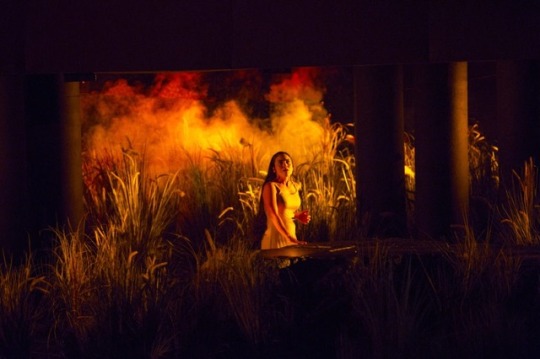
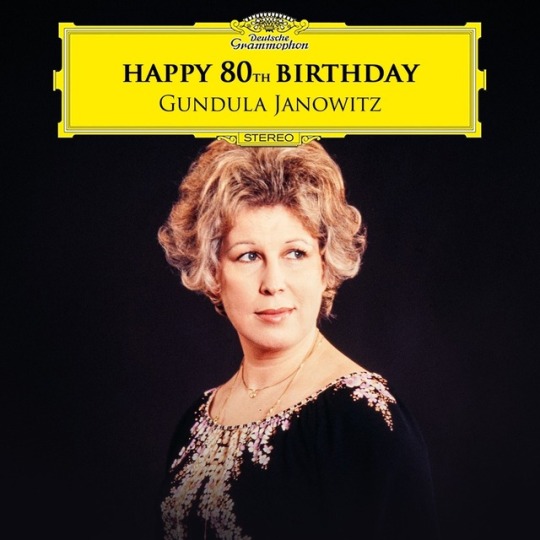
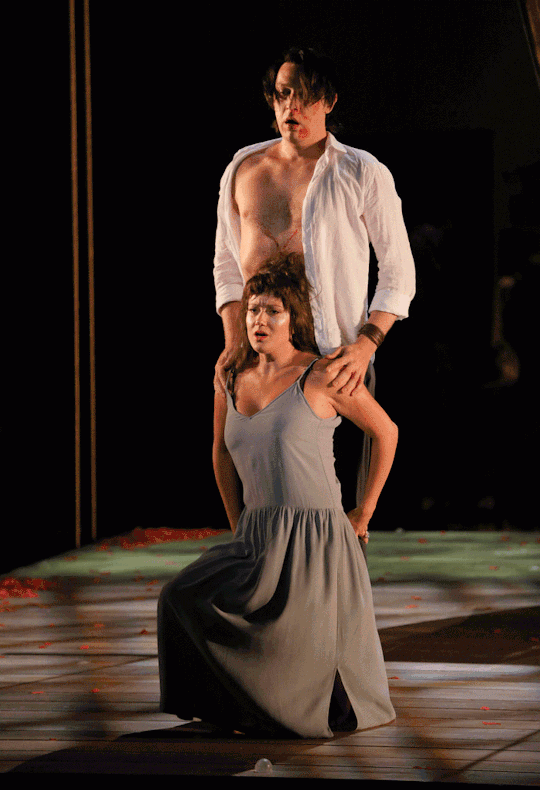
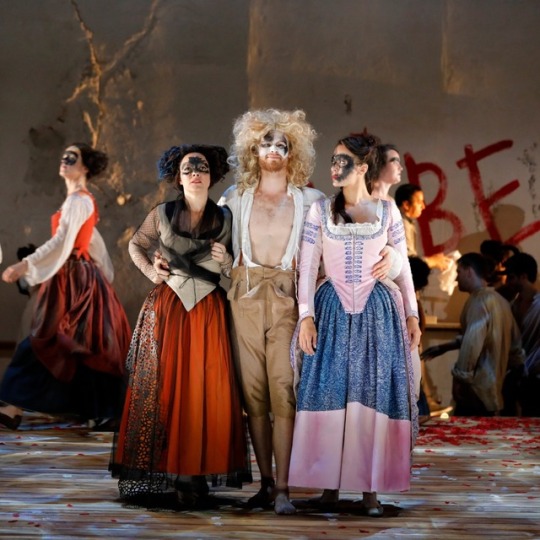
ONTEM EM COLARES COM MUITO MOZART ! : de manhã terminei a escuta da excelente selecção dos 191 registos que a DG fez do repertório de Gundula Janowitz . ( *****) .Insisto com os meus amigos que não percam este banquete ! Pela hora do almoço deparei no Mezzo com a produção do D. Giovanni que Aix-La Provence .apresentou este mês . Irrelevante com excepção da prestação vocal de Julie Fuchs como Zerlina (**) . Finalmente uma tarde lírica com o streaming em directo de Glyndbourne da Clemenza de Tito numa encenação do famoso Claus Guth . Comparando com o êxito da sua produção das Bodas de Figaro em Salzburgo é um trabalho menos conseguido ( e sobretudo para quem teve a sorte de ver a iconica encenação de Martin Kusej no .Felsenreitschule.de Salzburgo em 2006 . )Ticciati dirigiu bem a Orchestra of the Age of Enlightenment . O veterano Richard Croft (substituto tardio de Steve Davislim, que renunciou após desentendimentos com Guth) cantou com estilo mas em esforço . Alice Coote como Vitellia foi irregular . O resto do elenco cumpriu . . O coro dirigido por Jeremy Bines estava a grande nível .Mas a estrela incontestável da noite foi Anna Stéphany - um Sesto magro e jovem, emocionante, cheio de ang��stia e remorso, despachando as suas grandes árias com extraordinário elan e impecável controle técnico. QUANDO CANTAVA ILUMINAVA UMA PRODUÇÃO SOMBRIA .(***) "Guth begins with a film, faultily projected on opening night but clear enough to enable us to see Tito and Sesto playing together as boys in an Edenic natural landscape. Their friendship and this earthly paradise, however, are already under threat from Sesto’s unthinking propensity to violence and Tito’s innate disgust at it. When we encounter the pair as adults, we find their relationship further corrupted by the demands of sex and politics. Their Eden has become a decaying wilderness, dominated by a hideous office block, where Richard Croft’s Tito fends off the endless demands of sycophantic civil servants. Down below, meanwhile, Anna Stéphany’s Sesto, in thrall to Alice Coote’s neurotic, chain-smoking Vitellia, unwillingly plots revolution. "
0 notes